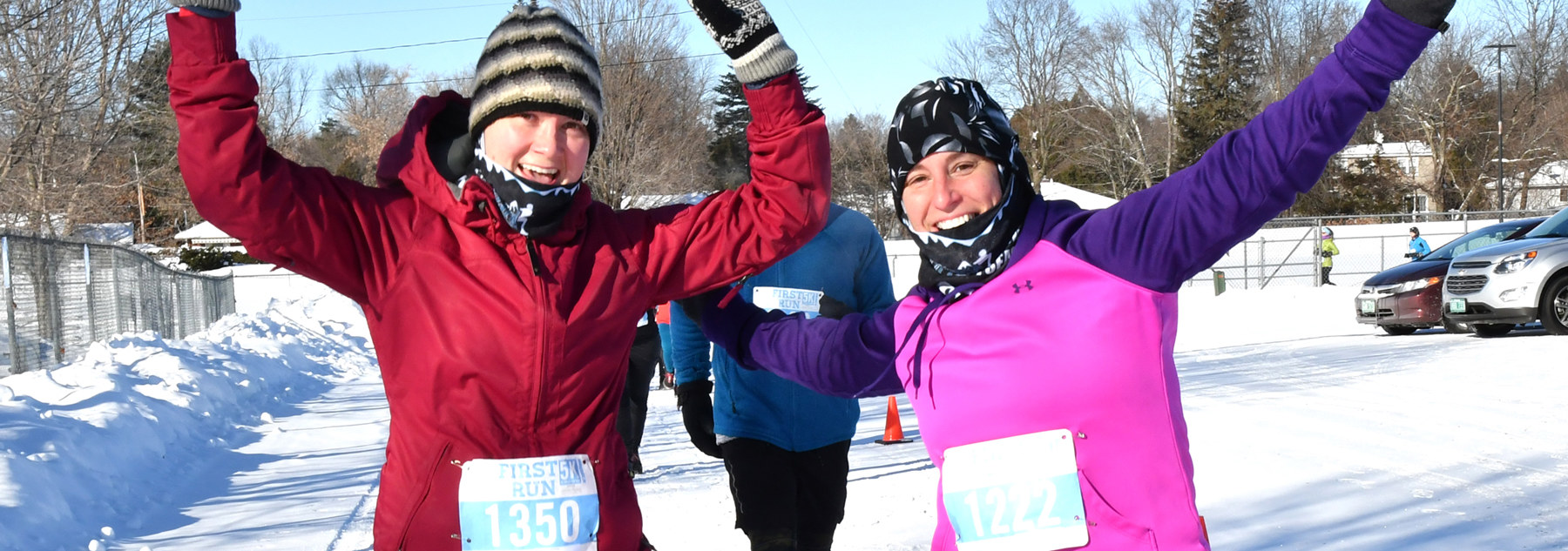Forget about the warnings of “winter is coming;” winter has arrived and with it, frigid temperatures and shorter days. I don’t know about you, but when the temperature drops below freezing and daylight hours are at an all-time low, the urge to hibernate strikes and my regular motivation to run is nearly impossible to muster up. However, as much as it might be tempting to curl up fireside and skip out, the winter months are far too long to languish inside and with the right approach running in the elements doesn’t have to be a punishing experience. Here are some tips to tackle cold weather running:
- Make yourself accountable. Makes plans to run with a friend or a running group. It can be all too easy to back out of a run when you’re snug and cozy inside and the outside looks like a snow globe come to life. The last thing you want to do is leave your friend out in the cold (pun intended), so setting a standing day and time to meet up is a great way to keep yourself accountable and have the added bonus of company to log some miles with. Signing up for a race is another great way to motivate as the thought of showing up to the start line unprepared could be just what you need to get yourself out the door.
- Dress for the occasion. Even though it might seem absolutely arctic when you initially step outside, you have to remember that your body temperature will rise quickly once you get moving. Bundling up too much can leave you sweating even in the coldest of conditions so opt for layers that you can easily shed once your body starts to warm up. Meghan Trainor said it best…it’s all about that bass, only in this case; base. Start with a moisture-wicking base layer. Then, depending on the conditions, include a mid-layer top and even an outer layer on top of that for really cold days. Don’t forget gloves or mittens along with a hat to keep those extremities safe from frostbite.
- Factor in the wind chill. Even mild winter days can feel down right frigid when the wind chill kicks in. Plan your running route so you run into the wind for the first half and with the wind at your back for the second half. Running with the wind to start will leave you sweaty and as soon as you turn around the wind will drop your body temperature rapidly. Also, consider a shell over your insulated layers to block the wind and cover your face with a buff if needed.
- Hydrate. Runners tend to drink less in the cold because they don’t feel as thirsty and aren’t noticeably perspiring. However, cold, dry air can increase risk for dehydration, so focus on getting adequate fluids throughout the day and consider carrying water if your run is going to be longer than 75 minutes.
- Tread carefully. Cold weather inevitably makes for icy conditions and one misstep on a patch of ice can, at best, make for an embarrassing fall and, at worst, result in a side-lining injury. Slow down when necessary and be especially careful when rounding corners. Consider running on recreation paths or sidewalks that regularly plow and salt (usually paths near schools and universities are the first to be cleared). If that isn’t an option or you’re too impatient to wait for the plow to come, consider investing in a pair of spiked shoes or Yaktrax for added traction.
- Take time to reflect. Fewer daylight hours means odds are good that you’ll be running in the dark. Wear reflective gear and bright colors to make yourself visible to motorists. If you’re running in poorly lit areas gear up with a headlamp so you can see where you’re going and others can see you coming.
- Change it up. As soon as you’ve finished your run, shower or change into a fresh pair of clothes (no judgment if you skip the shower). Damp clothes will quickly drop your core temperature as soon as you’re done running so a quick change will prevent a case of the chills.

